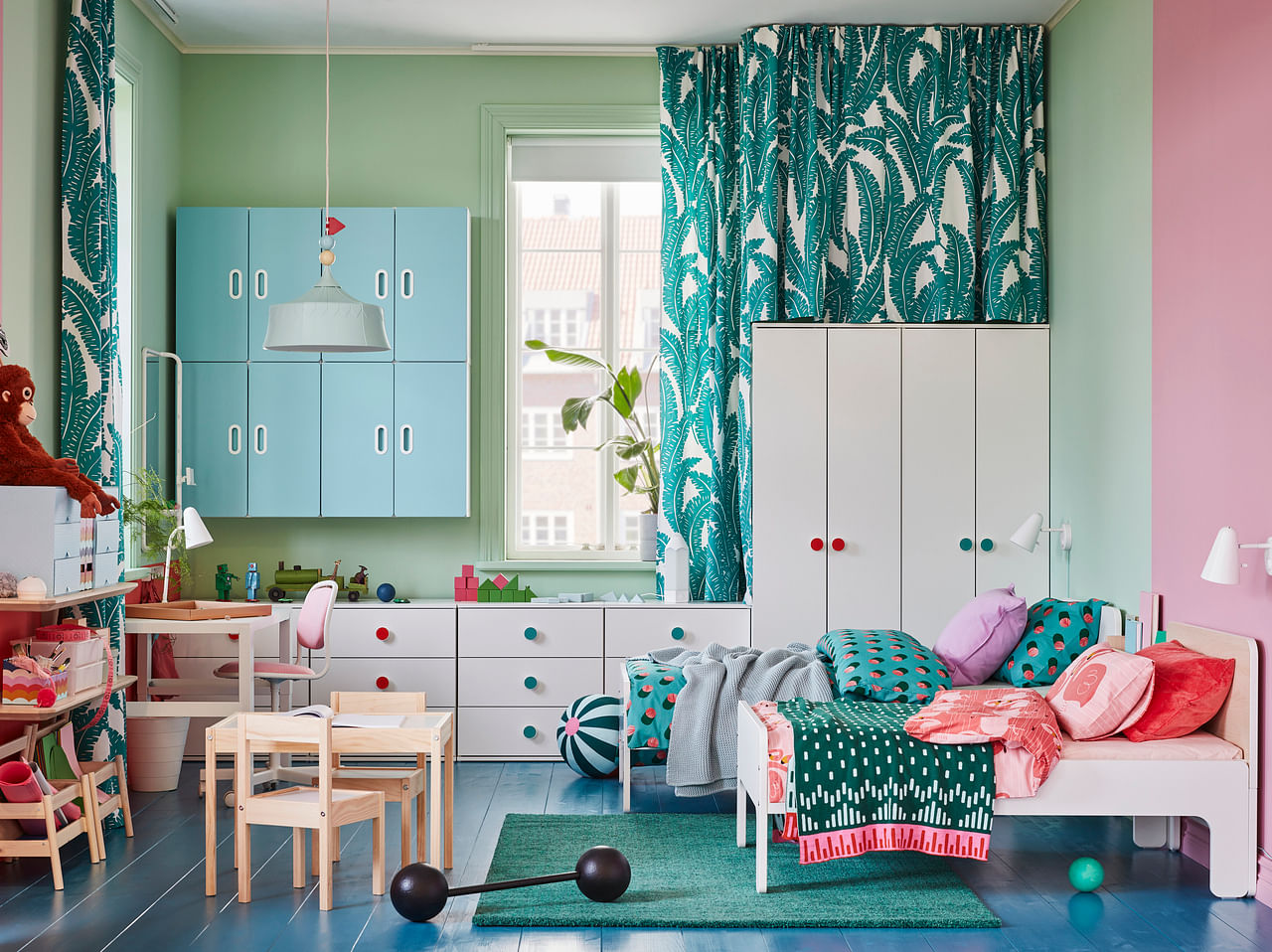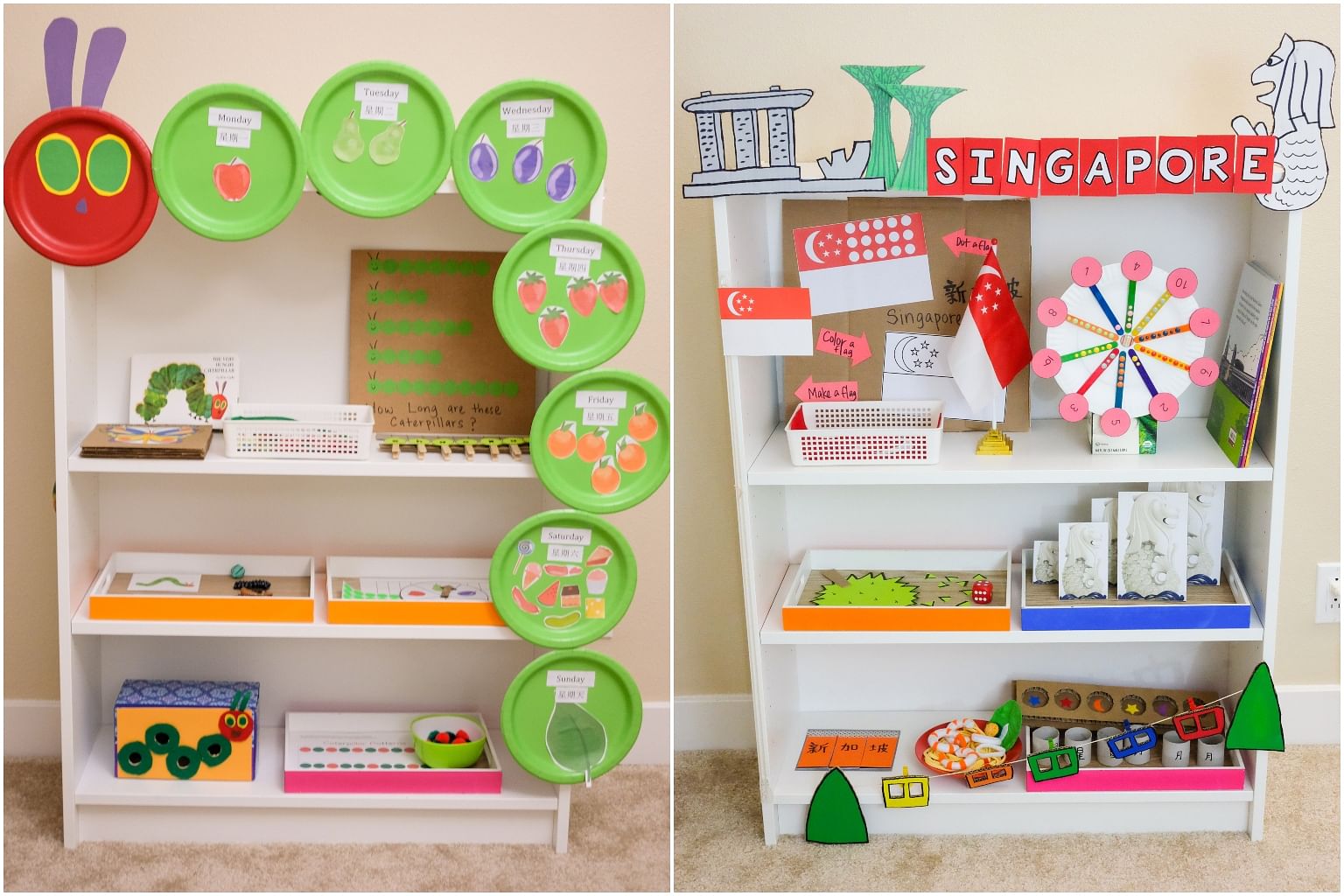The Life List: 6 tips to create a learning space for kids
SINGAPORE – When creating a learning space for your children, consider other aspects of early childhood development like play, creativity, sensory experiences and motor skills, advise experts.
Madam Fynn Sor, 38, who teaches parents how to set up learning spaces at home, says learning is more than just ABCs, 123s and worksheets.
“A well-designed learning space is one that supports the well-rounded development of children, and that is more than just books and academic work,” she says.
Depending on your child’s interests or the theme you decide on, what could typically go into a learning area are books, toys, pictures or art and craft materials.
A reading corner could simply be a basket filled with quality books.
A creating corner is an area with art supplies and tinkering materials designed for children to create. It could include recycled items.
A discovery corner is one that sparks your child’s curiosity and inspires him or her to learn more about his or her world.
1. Start small
A learning space could be a corner in a living room, a caddy or trolley holding items needed for an art and craft session, or even a shelf or tray.
The quality of the materials and how they are displayed are more important considerations than the size of the space, says Madam Sor.
2. Child’s-eye view
Ikea Singapore’s communication and interior design manager April Kwan suggests viewing the room from children’s perspective to check if items are within reach.
“Go down to their height and see how things work for them. A sense of independence is vital for a child’s development, so make it easy for him or her to do things on his or her own,” she says.
3. Organise items
Whether you are using a shelf or a trolley, it helps to organise materials before you introduce them to a child, says Dr Aparna Chari Sundar, 35, a home organising consultant.
For example, one shelf can be for art materials, placed in containers or grouped on a tray. Cubed shelves with baskets can be used for easy demarcation of a space.
This helps children learn to pick up after themselves and put things back where they belong.
4. Theme it
Madam Sor selects themes based on her children’s interests.
For instance, when they found a book on volcanoes in the library, she created a volcano-themed learning shelf by grouping books, activities and do-it-yourself toys for them to explore.
“My children have never seen a volcano in real life, but through this themed learning shelf, they learnt about the different types of volcanoes and how they are formed,” she says.
“A themed shelf is a wonderful way to bring the world to our children.”
5. Expand their imagination
Put open-ended toys like Lego, wooden blocks, magnetic toys and play animals within reach.
Play parenting coach Juliana Ong, 33, says such toys are important to help children see the limitless possibilities of playing with them.
Having an open space for children to spread out, build and play will also help, she adds.
Dr Aparna has a container for recycled materials she puts aside for her children to use.
“When materials are readily available, they tend to create their own toys. All they need is tape, scissors, cardboard and so on. They recently created a Monopoly-inspired board game using recycled materials,” she says.
6. Set up a child’s space within an adult’s space
Dr Aparna suggests setting up a learning area for a child within an adult’s space so the child feels a sense of belonging. “Young children want to be included in everything the adults are doing. For instance, have children’s books in your bookshelf, but on a lower level,” she says.
She adds that having a child’s learning space within or near an adult’s work-from-home space would help both adult and child especially during this period. “Kids will feel more secure knowing their parents are nearby and are more likely to play independently, leaving the parent to focus on his work.”
Get the ST Smart Parenting newsletter for expert advice. Visit the microsite for more.
Source: Read Full Article




